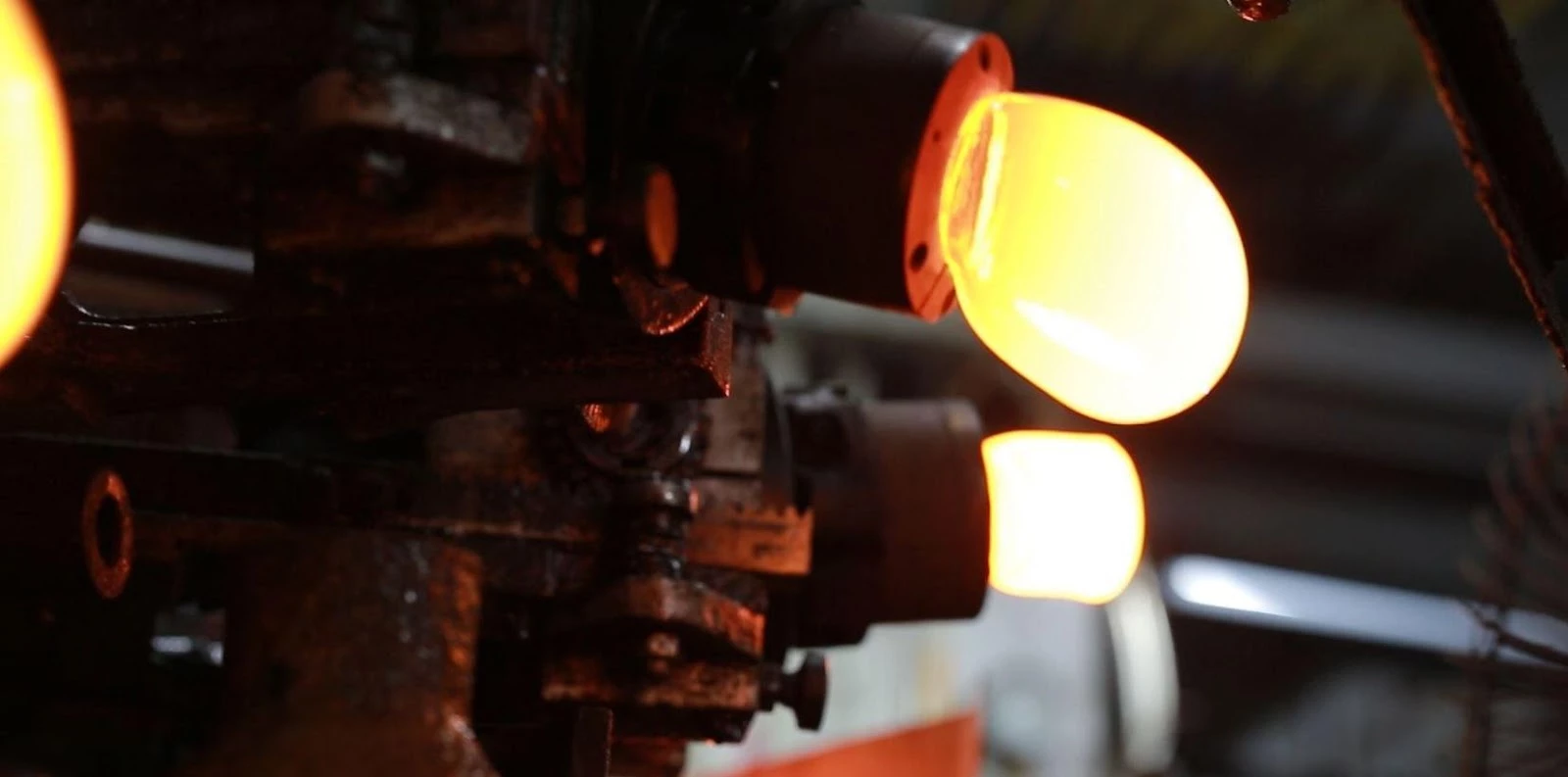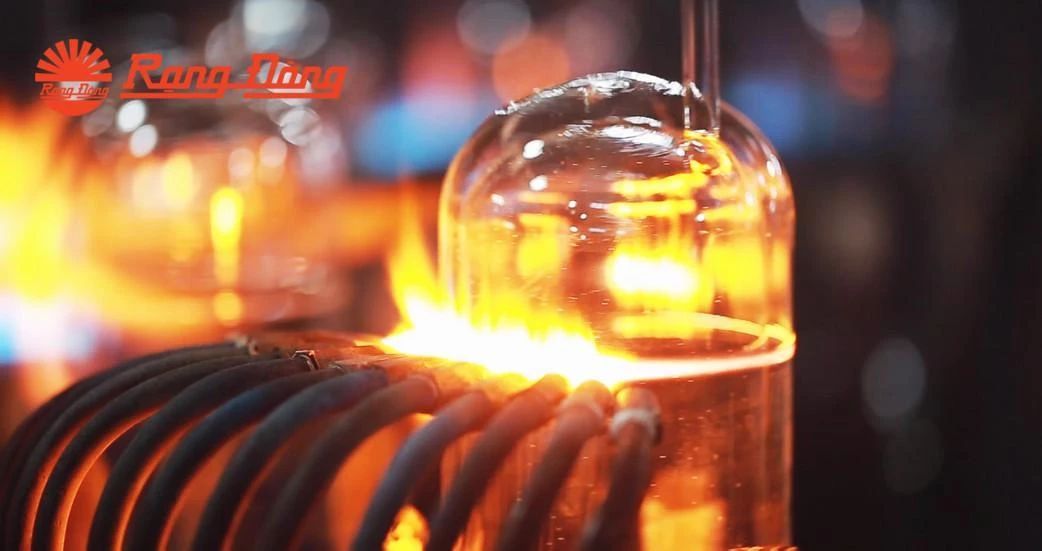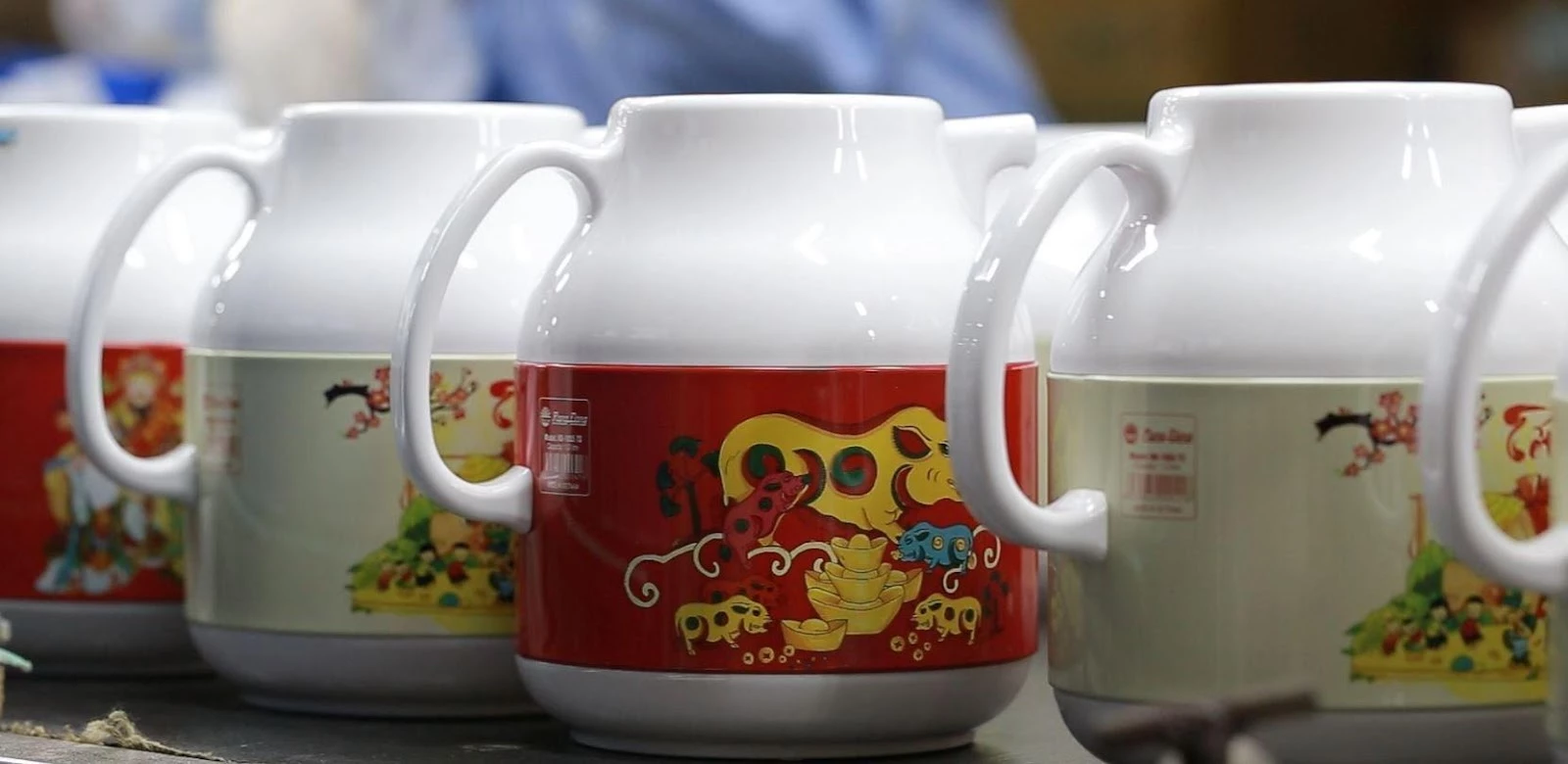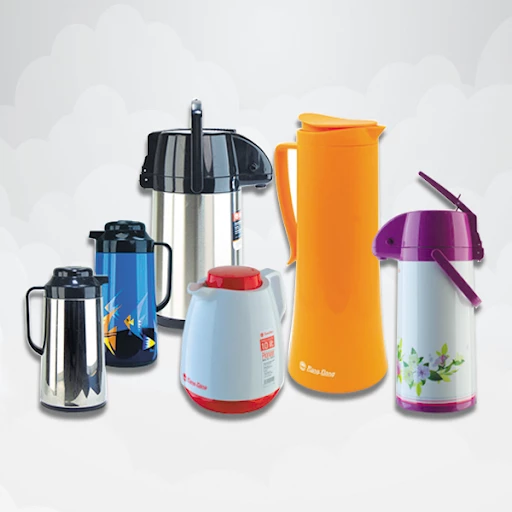Vacuum Flask Production and Rang Dong’s Know-how
Vacuum flasks were invented in the late 19th century and have been popular since early 1900s. Nowadays, billions of people own such a product, using it to keep drinks hot, cold and clean. Rang Dong is honored to be one of the world’s most famous manufacturers of vacuum flasks and has been exporting it to many countries on a long stretch from Asia to Europe to South America.
Rang Dong’s vacuum flask production
The vacuum flask production process complies with strict procedures, being divided into four stages: glass refill production, glass refill assembly, casing fabrication and completing vacuum flask assembly.
Stage 1: Glass refill production
This is the most important stage. Input materials such as sand, soda and limestone to fabricate glass liner are selected and filtered thoroughly before going to the glass furnace.
The temperature in the furnace is maintained from at least1,000 degrees Celsius to ensure the uniformity and transparency of the glass.
Rang Dong’s glass furnaces do not emit CO2 or SO2, the toxic gases threatening the environment. In the past, workers used to blow glass liner manually to make vacuum flasks. Now Rang Dong has put into operation automatic glass blowing machines to raise productivity. After that, glass is transferred to the forming machine to be shaped for various volumes and styles, such as one liter, 1.5 liters, two liters and 3.2 liters.
Glass forming, a key process in the production of vacuum flasks.
Stage 2: Glass refill assembly
In this stage, the glass bottle is cleaned, has the neck cut and is silver plated. Further manipulations are added such as asbestos, bottom sealing, bottle heating, vacuum pumping, body connecting and testing. Among them, bottom sealing, body connecting and silver plating are the most difficult. The heat keeping duration is decided by these three steps.
Neutral glass is totally safe for food, but silver plating is important in food safety as well. In full compliance with food contact regulations, Rang Dong has been creating the neutral glass liner and doing silver-plate in strict procedures to ensure customer’s safety.
Bottom sealing is one of the three most difficult production steps, responsible for the heat keeping duration.
Stage 3: Casing fabrication
The case is made of plastic, or stainless steel. Each type is produced in a specific way. Regarding plastic cases, Rang Dong uses a system of mixers and compressors to create a variety of plastic cases. Complied with the national and international regulations and standards on food containers and food contact, Rang Dong always chooses Polypropylene (PP), Acrylonitrile Butadiene Styrene (ABS) for making casing of vacuum flasks. Customers checking the case would easily find that its polish and color show truly the primary plastic material.
The manipulation of fabricating stainless steel casing is difficult. Cutting, rolling, punching, pressing, and bending are among the tasks to form a metal casing for flasks. The workers at these steps are skillful and careful when forming the stainless steel shape. Surface treatment is also important to create a smooth, shiny and eye-catching casing.
Plastic casing at Rang Dong comes from a system of mixers and compressors.
Stage 4: Completing vacuum flask assembly
At this final stage, we assemble the whole, completed vacuum flask. All accessories including label, nylon bag, packages, carton boxes with glass bottle, casing, stopper and gaskets are prepared at the first step. Workers insert a glass bottle inside the casing, threading gasket, covering the base and lid, and then stamping label, and finally packaging in boxes. In this stage, the work is manual as workers check appearance and the strength of the completed product during manipulating and before storing.
A set of Rang Dong’s final flask products
There are no longer the conventional lines involving manual works. Rang Dong has invested in modern lines, such as modern body connecting, Japan technology-silver plating, material handling and casing production.
Every step in the whole process of making a vacuum flask is strictly adhered to ISO standards on quality management, environment management, energy management and food contact regulations as well. All the materials used for fabricating the product are safe and of high quality. Each of these small details contributes to turning the vacuum flask from Rang Dong, Vietnam’s leading manufacturer of vacuum flask products, into an essential accessory trusted by customers all over the world.
Should you have any questions, wish to share your ideas about vacuum flasks or request a quotation, please send us an email to: export@rangdong.com.vn.
Our website: vacuumflask.rangdong.com.vn






